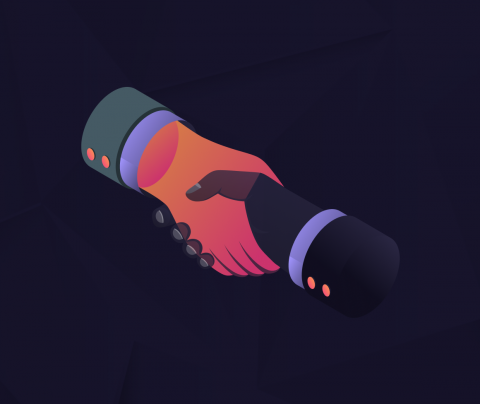Let me be blunt. You’re toast if you’re walking into 2025 with the same B2B marketing game plan you had two years ago. Markets have shifted. Buyer psychology has evolved. And if you’re not evolving with it, you’re just another name in someone else’s spam folder.
I’ve spent the last few years running experiments, auditing funnels, and helping businesses fix things they didn’t even know were broken. The patterns are always the same: laggy analytics, sloppy automation, overused playbooks, and zero personalization. That’s the formula for mediocrity. What works in 2025? Let me show you.
1. Personalized Funnels Are Not Optional Anymore
Let’s start with the big one. Personalization isn’t just a “nice touch” anymore – it’s the minimum requirement to be taken seriously. Buyers are sick of one-size-fits-all outreach. They expect you to know who they are, what they care about, and where they are in their journey.
Most B2B funnels look like they were built for robots. They have static landing pages, generic follow-ups, and no segmentation. Then, people wonder why their email open rate is in the single digits.
To fix this, start with segmentation. Group your audience by intent, stage, or behavior. Create messaging that adapts dynamically. Automate your follow-ups based on actions, not assumptions. If someone watches 80% of your product demo? Treat them differently from someone who bounced after 10 seconds.
Here’s where Hyperone can quietly power your backend. While you focus on storytelling, the platform handles traffic behavior analysis, real-time attribution, and route automation. It makes sure your traffic doesn’t just land – it flows where it’s supposed to go.
2. Dark Social Is Real (And It’s Dominating)
There’s a growing blind spot in B2B marketing that’s killing your attribution models: dark social. These are the channels where your buyers are talking, but you can’t see it in your analytics. Think private Slack groups, WhatsApp threads, and peer-to-peer DMs.
Your leads aren’t discovering you through a Google search anymore. They’re hearing about you from a colleague who dropped a link in a Telegram group. Or from a niche podcast that doesn’t show up in your referral traffic. And if your systems aren’t built to track that?
You’ll keep crediting “direct traffic” while your competitors scoop up warm leads from the shadows.
What you need is infrastructure that can sniff out the invisible. Start using shareable assets with custom UTM parameters. Monitor referral spikes and cross-reference timing with external posts. And yes, this is where a tool like Hyperone helps. Not because it’s magical, but because it gives you high-res data with a simple interface. No guessing, no waiting.
3. Automation Isn’t About Speed – It’s About Scalability
Let’s get one thing straight. Automation used to be about saving time. In 2025, it’s about enabling scale. You want to double your inbound volume without doubling your team? Then your systems better be tight.
The average B2B team is drowning in fragmented tools: one for lead routing, one for email delivery, one for performance reporting, and then a manual spreadsheet hell for everything else. This creates lag, inconsistency, and, worst of all, wasted leads.
Here’s what smart teams are doing instead: building unified, modular systems that route, analyze, and act on data instantly. No delays. No handoffs. No spaghetti code. Just clean workflows.
At Hyperone, we’ve seen firsthand how automating lead scoring, traffic redistribution, and fraud detection can take a business from barely keeping up to full throttle mode. Especially when verticals like finance or gambling demand quick decisions and razor-thin margins.
4. B2B Video Content = The New Cold Email
If you’re still doing outreach with templated emails that sound like a sales intern wrote them… well, good luck. In 2025, your prospects are consuming short-form, face-to-face content. And if you’re not showing up in their feed as a real human, you’re invisible.
This isn’t about slick production. It’s about connection. Shoot a Loom video walking through their website. Share a personal story about working with a similar company. Use LinkedIn to post weekly updates with actual insights – not just company promos.
When your audience can see your face and hear your voice, trust builds faster. Response rates go up. Meetings get booked without begging. And if you embed those videos directly on a page that tracks engagement? You now have data that sells.
Here’s the cool part: with Hyperone, you can host those videos, sync them with traffic dashboards, and follow up based on real interaction. Did they rewatch your pitch? Click the CTA? You’ll know. And you’ll act on it, fast.
5. Real-Time Reporting Is the Game-Changer
Let’s end with the silent killer of most campaigns: delayed feedback.
If your reporting only happens at the end of the week, you’ve already lost the game. Ad spend has been wasted. Funnels broke mid-flight. Fraud slipped through. And you had no idea.
That’s why real-time data isn’t just a “nice to have” anymore – it’s survival. You need to know, this hour, what’s working and what’s broken. Not tomorrow. Not next week.
A good reporting system should alert you when:
- Lead quality drops below a certain threshold
- Fraud indicators spike in a specific geo
- A landing page conversion suddenly tanks
- An automation scenario stops firing
You don’t need to manually check a hundred things. You need alerts. Triggers. Bots that ping you when it matters.
Hyperone’s real-time dashboard, for instance, gives you exactly that. You get notified on Telegram or by email the moment something looks off. It’s like having a co-pilot for your campaigns who never sleeps.
Here’s Your Cheat Sheet
If you’re juggling a million priorities and just want to cut to the chase, here are the 5 aspects of B2B marketing you can’t ignore:
- Funnel personalization: Adapt your message to each lead, every step of the way.
- Dark social awareness: Track what can’t be seen on the surface.
- Automation for scale: Build workflows that support growth without extra hires.
- Video-first outreach: Use your face and voice to build trust faster.
- Real-time feedback loops: Catch problems before they drain your budget.
The future doesn’t wait. Either you move with it, or you fall behind.
Hyperone isn’t a magic wand – it’s a toolkit. But when you use it right, it becomes the backbone of everything above. And that, my friend, is how you survive 2025 and thrive while others are still trying to figure out what went wrong.
Conclusions
2025 isn’t just another calendar year – it’s a hard reset for how B2B marketing works. The tactics that you used to buy you time or forgiveness are now liabilities. Buyers expect intelligence, speed, and authenticity. And if you’re still relying on outdated tools and generic messaging, you’re setting yourself up to be ignored.
The five aspects we’ve walked through aren’t trends – they’re the new standard. Personalization isn’t just an upgrade, it’s a baseline. Dark social isn’t mysterious; it’s where the real decisions are happening. Automation isn’t a tech buzzword; it’s the only way to scale without chaos. Video isn’t fluff, it’s the new handshake. And real-time feedback isn’t a luxury – it’s life support.
Hyperone isn’t the hero of your story – you are. But it is the operating system that helps you run faster, smarter, and cleaner. And in this game, speed and clarity aren’t bonuses – they’re the difference between scaling and stalling.
So here’s your move: audit what you’re doing today, kill the dead weight, and rebuild your stack with these five principles in mind. The teams that embrace this shift early will dominate. The rest will chase ghosts.









